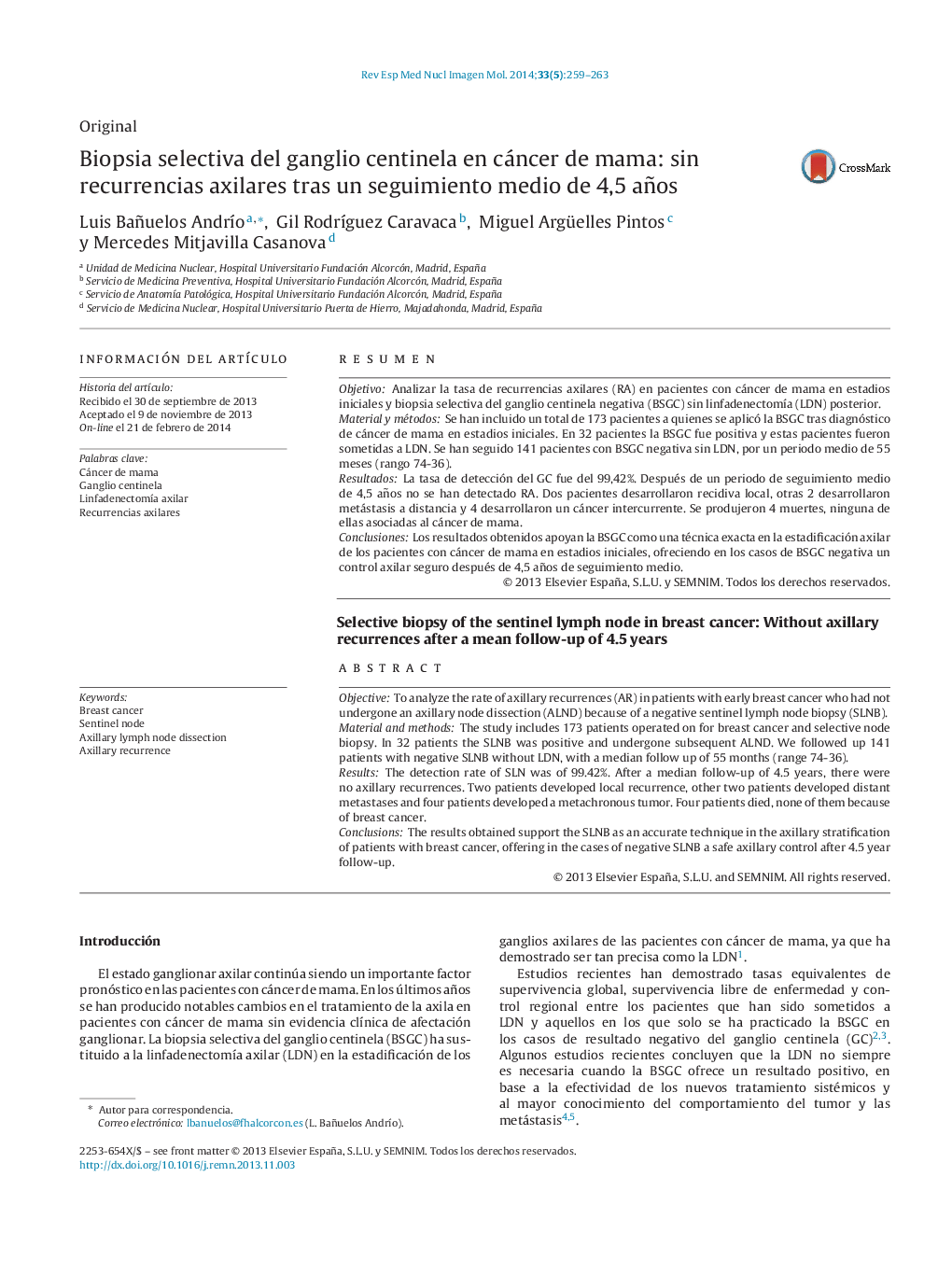| Article ID | Journal | Published Year | Pages | File Type |
|---|---|---|---|---|
| 4249915 | Revista Española de Medicina Nuclear e Imagen Molecular | 2014 | 5 Pages |
ResumenObjetivoAnalizar la tasa de recurrencias axilares (RA) en pacientes con cáncer de mama en estadios iniciales y biopsia selectiva del ganglio centinela negativa (BSGC) sin linfadenectomía (LDN) posterior.Material y métodosSe han incluido un total de 173 pacientes a quienes se aplicó la BSGC tras diagnóstico de cáncer de mama en estadios iniciales. En 32 pacientes la BSGC fue positiva y estas pacientes fueron sometidas a LDN. Se han seguido 141 pacientes con BSGC negativa sin LDN, por un periodo medio de 55 meses (rango 74-36).ResultadosLa tasa de detección del GC fue del 99,42%. Después de un periodo de seguimiento medio de 4,5 años no se han detectado RA. Dos pacientes desarrollaron recidiva local, otras 2 desarrollaron metástasis a distancia y 4 desarrollaron un cáncer intercurrente. Se produjeron 4 muertes, ninguna de ellas asociadas al cáncer de mama.ConclusionesLos resultados obtenidos apoyan la BSGC como una técnica exacta en la estadificación axilar de los pacientes con cáncer de mama en estadios iniciales, ofreciendo en los casos de BSGC negativa un control axilar seguro después de 4,5 años de seguimiento medio.
ObjectiveTo analyze the rate of axillary recurrences (AR) in patients with early breast cancer who had not undergone an axillary node dissection (ALND) because of a negative sentinel lymph node biopsy (SLNB).Material and methodsThe study includes 173 patients operated on for breast cancer and selective node biopsy. In 32 patients the SLNB was positive and undergone subsequent ALND. We followed up 141 patients with negative SLNB without LDN, with a median follow up of 55 months (range 74-36).ResultsThe detection rate of SLN was of 99.42%. After a median follow-up of 4.5 years, there were no axillary recurrences. Two patients developed local recurrence, other two patients developed distant metastases and four patients developed a metachronous tumor. Four patients died, none of them because of breast cancer.ConclusionsThe results obtained support the SLNB as an accurate technique in the axillary stratification of patients with breast cancer, offering in the cases of negative SLNB a safe axillary control after 4.5 year follow-up.
